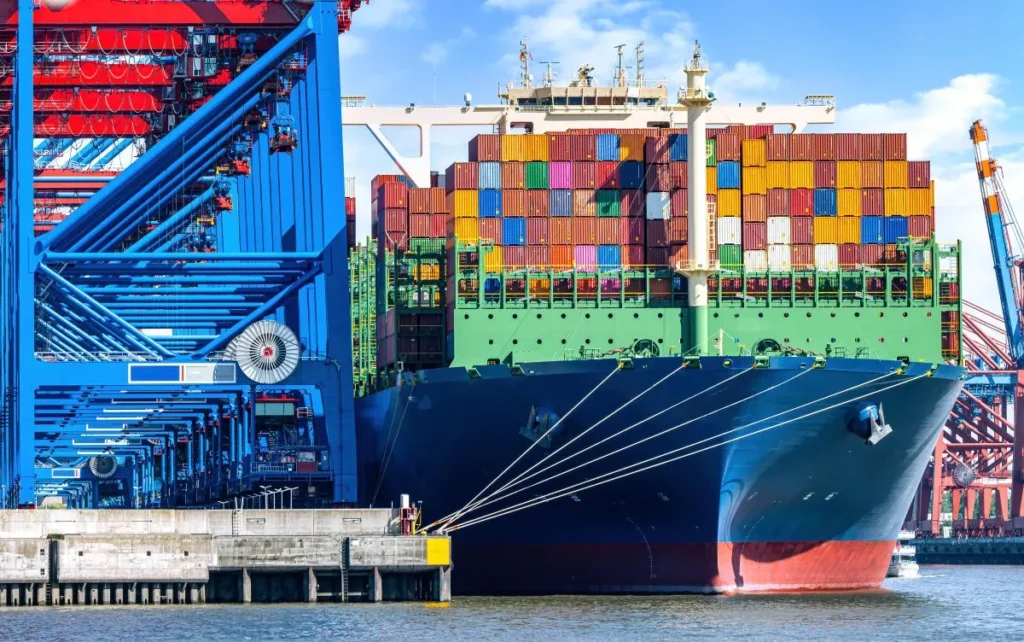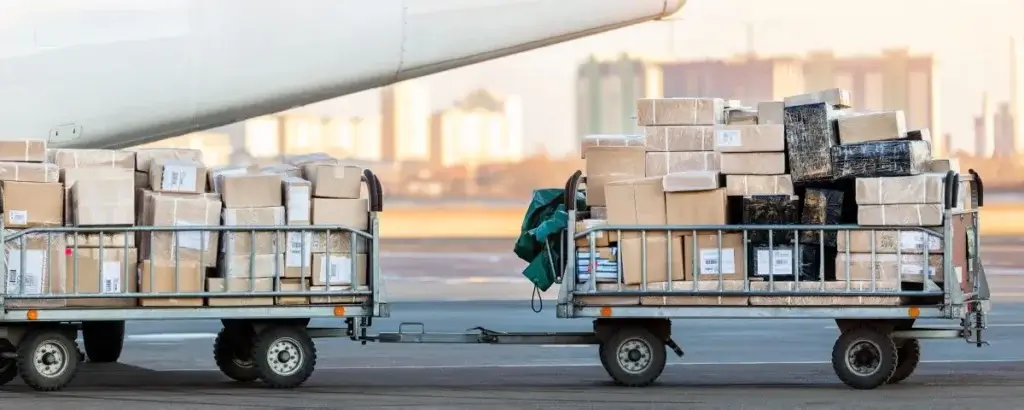Every year we can observe how the bars describing the e-commerce market are rising. According to data from this year’s Cushman & Wakefield report “How to handle e-commerce in a warehouse”, Poland has the highest growth rate in Europe (at the level of 18% year on year), and the value of this market has already exceeded PLN 51 billion (12 billion euros).
Such a dynamic growth of this modern sales channel is also connected with changes in the structure of logistics operations. When we deal with traditional trade – we work in the classic supply chain model – from the largest collective packaging (e.g. 40’ container), through pallets, to collective packaging – e.g. cardboard. Deliveries to retail outlets are often done up to the level of collective packaging, and even if individual items are delivered to the store, they are aggregated into a collective delivery with many other products to replenish the store’s inventory.
With e-commerce, the situation is quite different. Often, the route of products in aggregate form ends at the stage of the container, which indeed must be unloaded and the goods spread on pallets, but these pallets serve only as a carrier at the stage of storage. Products are delivered to the end customer in individual quantities and packaging.
For the logistics industry, the growth of e-commerce brings with it many challenges, starting from the change in the structure of carriage in the whole transport (the share of groupage shipments and the number of recipients in the form of natural persons is growing) and a huge increase in the importance of companies providing CEP services (courier, express and parcel shipments). Another area requiring a change of approach is, of course, the way in which products are stored, collected and packed for dispatch, i.e. shifting from operations on pallets and cartons to the level of individual items.
With the growth of the e-commerce market, a new field of services – fulfillment – has emerged in logistics. Of course, large players are trying to settle in this area, but their business strategy and the level of the initial operating costs often prevent them from opening up to small and medium-sized online shops. Currently, this niche is being filled by several players – operators specializing in e-commerce services with a comprehensive offer for small and medium-sized companies. However, taking into account the fact that currently the number of shops using the services of an external operator is several times less in Poland than in the Netherlands or Germany – it should be taken into account that the area to be filled will only grow and more and more e-commerce shops will focus on the core business (sales), putting logistics in the hands of specialists.
To meet these trends and expectations – increasingly more warehouse and logistics center owners are planning to add or have already added to their offer services dedicated to e-commerce. However, successful entry to this market requires having or implementing a number of functionalities both in the internal operation layer, the way the warehouse communicates with the internal world and the implementation of a number of new processes in the warehouse itself.
In the technological layer inside the warehouse – the warehouse system (WMS) for e-commerce should be expanded with the functionalities of orders management system (OMS) – built-in or as an additional application. Even the best and most well-known WMS (such as RedPrairie or Qguar) do not provide in their basic configuration a number of functionalities useful to support e-commerce. OMS allows for efficient connection with many courier companies in order to print labels online, it also allows for any configuration of printouts of documents for orders (e.g. thanks for shopping, withdrawal form, etc.), or even for handling fiscal printers in the warehouse, printing receipts and invoices for buyers.
WMS for e-commerce should also be capable of processing a large number of events with a small amount of data in a short time. In contract logistics there are fewer events, but the amount of data in an event is greater (e.g. fewer stock issue confirmation (CI) documents, but more lines and items on a document).
WMS for e-commerce must also enable planning fast picking paths and dynamic management of picking points (planning of moving goods with increasing rotation to picking points). It is worth exploring the possibility of upgrading the existing WMS, either by adding missing functions or by implementing ready-to-use overlays – such as the Linker platform, which combines many OMS functions with an integration layer from ERP, store fronts and courier servers.
The operational layer for efficient e-commerce handling requires also the following:
– Convert a classic pallet warehouse into an environment that provides wide, direct access to multiple material indexes without the need for forklift trucks. In practice, this means converting parts of the pallet racking into shelf racking or building a multi-storey mezzanine floor with shelves. Another solution, of course, is automatic groupage storage systems, but they involve considerable investment.
– For efficient packing of orders it is necessary to prepare a number of stations equipped with tables, computers or mobile terminals, printers and slots for cartons and other packaging materials.
– In addition, it is necessary to ensure that there are corridors for the flow of packaged parcels – whether in the form of picking up pallets with parcels and transporting them to the loading zone or belt conveyors transporting parcels to the consolidation zone.
– One of the most important changes – unfortunately often overlooked in the process of preparing a warehouse for e-commerce – is the adjustment of social facilities for a significantly larger workforce.
– What changes in operations is also the rhythm of work and difficult planning – the standard on the Polish market of e-commerce is the shipping of the product on the day of placing an order (of course, assuming a reasonable order cut-off hour – for example, 4 pm to 6 pm).
In the technological layer of communication with the outside world – in addition to the aforementioned exchange of data with courier companies – the following should also be ensured:
– capabilities for integration with our customers’ ERP systems,
– capabilities for integration with popular e-commerce platforms,
– optionally and often rationally – attaching an additional overlay to our WMS, which will handle the above channels of communication and expand the capabilities in terms of operations on orders (additional print-outs, cross-sale, etc.).
This communication must, of course, be two-way, which means that our system must be capable of the following:
– Give the data on the current warehouse stock levels to the client’s shop/ERP system,
– Be able to accept system delivery notification (with the possibility of automatic creation of new indexes) and give the statuses of this notification,
– Accept orders with a number of additional data (e.g. additional documents, invoice for printing, data for COD) and, of course, give the statuses of these orders together with the number of the consignment note and the carrier’s designation,
– Be able to register a return in relation to an order and, in cases where the client’s system requires it, provide information about the return and its statuses to external systems.
Apart from the administrative and technical layer, a logistics operator wishing to enter the market of fulfillment services must have a comprehensive offer ready, which should consist of the following:
– Standard fulfillment services:
-
- acceptance of delivery,
- storage settled per shelf / item (stock will often be shorter than a pallet),
- order packaging,
– Complementary internal offerings:
-
- packaging materials, tapes, fillers,
- value-added services (e.g. labelling, localization, repackaging),
– Complementary external offerings:
-
- services of a wide portfolio of courier companies,
- transport services,
- certified waste disposal service.
Efficient customer service is also an extremely important parameter. The recipients of the shipments will be consumers – natural persons, customers of our client. This means the need for instant communication and responsiveness in case of inquiries, complaints and returns.
The areas discussed above are just a short list of ‘must haves’ – things you need to have or do to be able to offer potential e-sellers support for their e-commerce stores. However, the key to success is both good preparation of these foundations, as well as a balanced pricing strategy and appropriate communications concerning the offer.









